Chilly spring weather and quarantining don’t have to be the end of harvesting fresh vegetables. There’s no better time to try your hand at growing your own vegetables than now. And contrary to popular belief, not all vegetables require outdoor growing; many can flourish from the inside of your home and last all year long. Promise: growing vegetables indoors is for plant beginners, so no green thumb is needed. Read on to learn about 10 vegetables you can easily grow indoors.
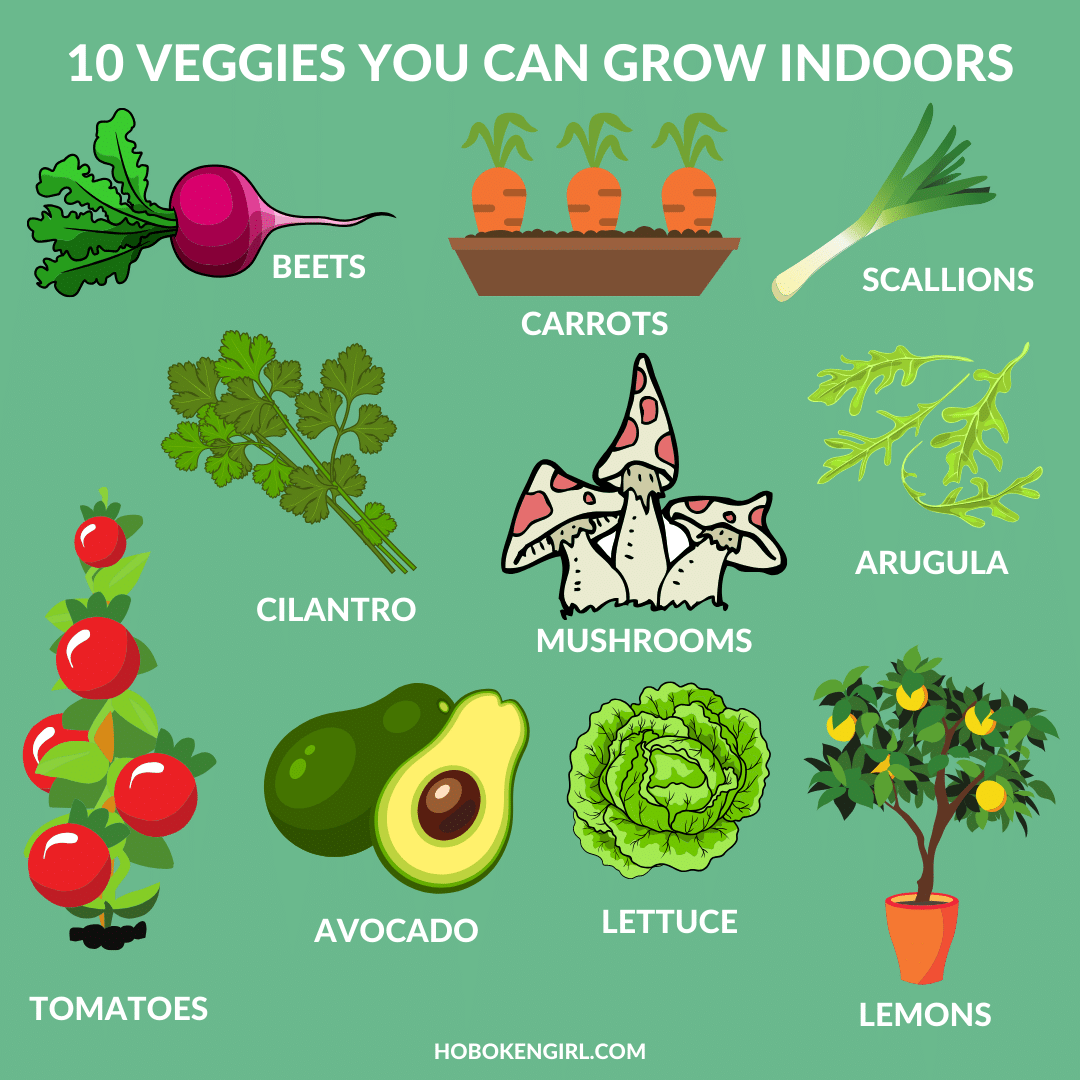
A Few Tips to Keep in Mind When Learning to Grow a Garden Indoors
- It’s possible to grow some of these vegetables by potting the roots directly into the soil, but it’s likely that they won’t carry the same taste, which is why vegetable seeds work best.
- It’s important that there is room for drainage, as these seeds require well-draining soil. Pots with holes on the bottom along with a shallow drainage dish underneath is necessary for all vegetable growing.
- Potting soil is essential for the vegetables to thrive indoors, so an all-purpose potting soil works well.
- While each vegetable requires different amounts of sunlight, many flourish in areas that receive the most light {12 hours a day} and remain warm. As an alternative, grow lights are specialized bulbs that help maintain optimal light and temperature for plants.
- Keep the pots away from active heat and cold sources like ovens and windows with a cold draft.
- Harvest time means the vegetables are ready to be eaten.
Indoor Vegetable Garden Systems
For those who are looking for a permanent home for their vegetables and herbs with less responsibility, there are indoor vegetable machines that essentially grow them for you. AeroGarden is a well-known brand that sells several models that grow the products fresh all year-round in water with no soil, and energy-efficient LED grow lights. The overall growth is faster but the kinds of vegetables that can be grown on the countertop garden system is limited and works best with small vegetables like cherry tomatoes and herbs.
Vegetables
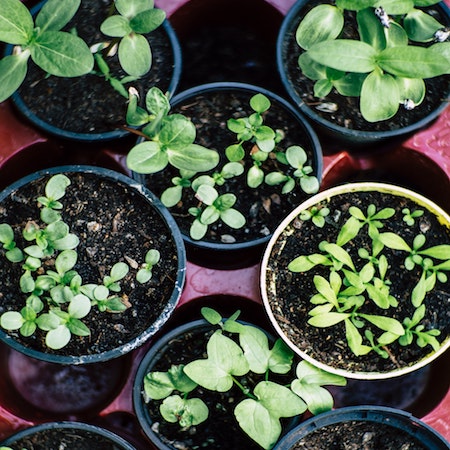
Beets
Beets are low in calories, lower blood pressure, and are filled with nutrients, so they are a no-brainer for a well-balanced diet. Beets require more soil and space than the typical vegetable. Once the pot or container is filled with potting soil to about 16 inches, begin planting the seeds in the soil about ¼ inches deep and one foot apart. If the seeds are too close, they may be oddly shaped when fully grown. Beets grow best at lower temperatures and when they have consistent moisture. The seeds typically sprout in 17 days if the soil is at 50 degrees Fahrenheit. Adding an inch of water each week is ideal. To determine when they need watering, push your finger 1/4 inch into the soil to see if it is dry. Water the soil every few days depending on the lack of moisture. Placing the pot near a window and rotating the pot to ensure constant sunlight for all seeds is vital, as beets require a lot of sunlight to flourish. When grown to the size of a golf ball, they’re ready for harvest. They will grow to the size of a baseball if left unattended, losing their taste. When ready, twist off the foliage and leave the taproot as is. Refer to the packaging to confirm the specific time to maturity is.
Cilantro
Cilantro contains a high concentration of antioxidants that fight against common diseases. Once the pot is filled with potting soil to about 6 inches deep and watered until moist, cover the container with plastic wrap, securing it with rubber bands to trap the moisture. In about a week, remove the plastic wrap once the seedlings have sprouted and are pushing against the plastic. Water the soil every few days depending on the lack of moisture. Place the pot near a window and rotate the pot to ensure constant sunlight for all seeds. Snip a few leaves from each plant at first, being sure not to remove all the leaves from any one plant. In about three days, they should be ready for harvest.
See More: Local Farms and Butcher Shops Delivering Fresh Produce
Tomatoes
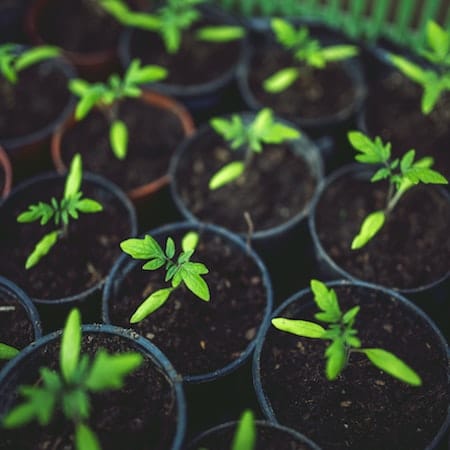
Tomatoes are a nutrient-dense superfood that helps support healthful skin, weight loss + heart health. Tomatoes are among the most common home-grown vegetables. Smaller tomato varieties are usually what do best when being grown indoors. Once the pot is filled with potting soil to about 6 inches, begin planting the seeds in the soil about ¼ inches deep. Water the soil every few days depending on the lack of moisture. Place the pot near a window and rotate the pot to ensure constant sunlight for all seeds. The seeds should sprout in five to 10 days. When they grow to three inches tall, add an organic fertilizer to the soil to assist with the growth. When plants bloom, tap the main stem and larger side branches with your finger, helping to encourage pollination. When grown to maturity, twist off the tomato, leaving the stem in the soil.
Carrots
Carrots are rich in Vitamin A, B, C, K and B6, which promotes good vision, growth, and more. Once the pot is filled with potting soil to about six inches, plant the seeds one inch apart in rows six inches apart, and ¼ inch deep {depending on the size of your pot}. Mixing plant hummus into the potting soil to assist in the growth of the vegetable is optional but recommended. Water the soil every few days depending on the lack of moisture, in this case, water the soil before planting the seeds. To help preserve moisture, you can soak some peat moss in water overnight and spread it on top of the seeds. The seeds should sprout in about two weeks. The carrots are ready to harvest when they’ve grown to about 3/4 of an inch across the top, just below the green stem. They’ll start to lose their flavor if overgrown. To remove the carrots, grab them firmly at the root and wiggle them around, then pull straight up. If the soil is hard, water it and then wait about an hour before retrying the harvest. Once the carrots have been pulled from the soil, remove the greens immediately, wipe off any excess dirt, and let them dry before storing them in the fridge.
Mushrooms
Mushrooms are full of fiber, low in fat and delicious. There are three types of mushrooms that flourish when grown indoors, oyster, white button, and shiitake. The method for growing each mushroom is similar, but the ideal growing substrate differs. For example, white button mushrooms need to be grown on composted manure, shiitakes on wood or hardwood sawdust, and oyster mushrooms on straw. Mushroom grow kits are an easy option for beginners, as they provide soil already insulated with spawn. If you choose to grow mushrooms on your own, research the needs of the specific mushroom you’re interested in. A pot or tray will do the trick. For a tray, use a 14 x 16 inch, about six inches deep. Mushrooms are grown from spores, not seeds. Once the pot is filled with spores and mushroom compost material to about six inches, sprinkle spawn on top. Mushrooms don’t require sunlight, therefore they can be grown anywhere within the home, but they do require warm temperatures. Press a heating pad up against the tray to raise the soil temperature to about 70 degrees for about three weeks or until you see sprouting. Then, drop the temperature to about 60 degrees and cover the spawn with an inch of potting soil. Water the soil every few days depending on the lack of moisture. The mushrooms should appear in about four weeks and can be harvested when the caps open. Never pull the mushroom up from the soil, as it could damage the surrounding fungi. Instead, cut the stalk with a sharp knife from the stem.
Avocado
Avocados are chock full of healthy fats and provide Vitamin C, E, K + B6. Growing avocado is a long-term commitment, it’s important to be committed to the journey ahead of time. Dwarf avocado plants work best for indoor harvesting. The larger the pot, the likelier the plant will start growing rapidly right away. Use a potting mix designed for cacti or citrus and never bury the trunk deeper than the part that flares out at the base. Apply a citrus fertilizer as directed every couple of months for the first year. They flourish best in warm temperatures between 60 and 85 degrees. Place the pot near a window and rotate the pot to ensure constant sunlight for all seeds. Overwatering is the number one cause of death for potted avocado trees, so maintain moisture but don’t overdo it. Yellowing leaves are usually a sign of overwatering, in which case, allow it to dry out. A deep soak once a week is ideal. It’s important to clean up the plant as it grows but cutting off dried leaves to make room for healthy stem growth. When an avocado seedling reaches about 12 inches, trim the tip and top leaves off, cutting just above a growth node. Once the stems are about eight inches long, trim the new growth at the tips off. When a seedling is over two feet tall, staking it will help to support its weight, after all, even dwarf avocado trees can grow to over 10 feet. Once the fruit reaches a mature size, pick one and let it sit on a shelf for a few days to ripen.
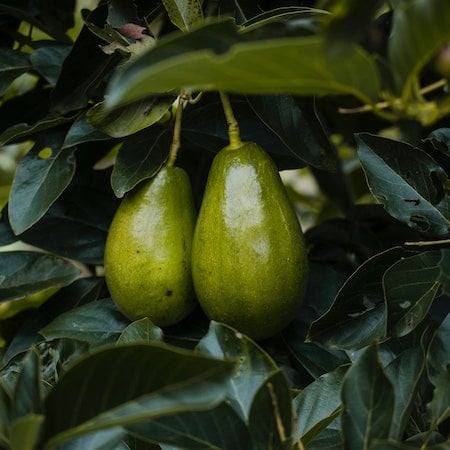
Scallions
Scallions have a lot more to offer than some added color. They are high in nutrients that promote weight-loss, immunity boosting, heart health and more. Scallions are easier to grow than micro-greens. The entire plant is edible and they are considered cut-and-come plants, meaning you can trim them for eating and the plant will continue growing. The fastest method is growing them from seed. Leave three to four inches of the white bulb intact and plant it about ½ inch deep in potting soil. Water the soil every few days depending on the lack of moisture. Place the pot near a window and rotate the pot to ensure constant sunlight for all seeds. It will sprout green stems that should be ready to harvest in two or three weeks. Harvest just the green tops, leaving about 1 inch of the stem to regrow or pluck entire scallions out of the pot to use the white portion.
Read More: Simple, Delicious, + Healthy Recipes to Make at Home
Arugula
Arugula is low in sugar, fat, calories and carbohydrates. Arugula does not need deep soil to grow. Once the pot is filled with potting soil to about four inches deep, plant the arugula seeds about one inch into the potting soil and spread them apart. If given the room, arugula plants can grow over two feet. In a small container, the leaves grow to the perfect size for salad. Arugula prefers cooler temperatures, which makes it a perfect vegetable to grow indoors. Water the soil every few days depending on the lack of moisture. Place the pot near a window and rotate the pot to ensure constant sunlight for all seeds. Thin out the weaker sprouting when needed. Each arugula seed produces one thin stem and each plant gives you multiple harvests if you cut the larger leaves and leave the small ones at the center. To harvest, cut arugula at the base of each leaf off the main stem. If you prefer a strong flavor and a thick, crunchy stem, allow them to grow to about six inches and cut the entire stem at its base.
Lemons
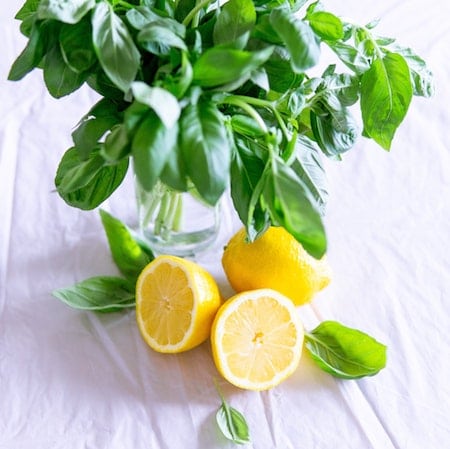
Lemons are packed with Vitamin C, which helps the body synthesize collagen, absorb iron, and metabolize protein. If you want the option of harvesting fruits right away, purchase a two-to-three-year-old dwarf tree at a nursery. Pink Meyer trees are best for growing indoors. It could be the perfect decorative statement for your home in addition to a source of food. Choose a plastic pot slightly larger than the root ball of your tree and layer the drainage dish with stones to allow air to circulate. Use a potting soil specifically formulated for citrus trees, or choose a slightly acidic, loam-based potting mix. Fertilize the tree once every few months with nitrogen-rich fertilizers. Place the pot near a window and rotate the pot to ensure constant sunlight for all seeds that will ideally maintain a temperature between 55 and 85 degrees. Water the soil every few days depending on the lack of moisture and regularly mist the leaves with a spray bottle. If you have a humidifier, keep it close to the tree to help keep leaves perky. Yellow leaves and stickiness is a sure sign of little pests, as they are drawn to citrus. Treatment with low toxicity is ideal, like insecticidal soap or horticultural oil. Pruning the tree allows space for the tree to flourish. Once the lemons begin to sprout, cut off ⅔ of them using a sharp knife or shears to allow the others to grow.
Lettuce
Iceberg Lettuce only has one calorie per leaf. Not only is it consistent with a healthy diet plan, it’s packed with vitamins. Look for loose-leaf varieties, such as Baby Oakleaf, Tom Thumb, and Black-Seeded Simpson. A shallow pot is ideal. Once the pot is filled with potting soil to about 4 inches, moisten it and sprinkle 10 to 15 seeds in rows on the surface about one inch apart. Proceed to add a ⅛ inch of potting soil on top. To maintain moisture, cover them loosely with plastic wrap or a lid. Water the soil every few days depending on the lack of moisture. Place the pot near a window and rotate the pot to ensure constant sunlight for all seeds. Sprouting will take place in a few days, however, be sure not to cut them too soon. At which point, add an organic fertilizer to assist with the growth. The seedlings should look green and strong. In about 4 weeks the lettuce should be about four inches tall and ready to harvest.
If you’re ready to start growing your own vegetables now, in the midst of social distancing, consider shopping online and staying home. You can order any of the seeds to make the veggies in this list from the following stores: Park Seed, Johnny’s Selected Seeds, Pine Tree Garden Seeds, Eden Brothers, Tyler Farms, Etsy Home and Living section, or Hudson Valley Seed Co. Seed Sheet also offers custom garden kits to design your own garden, tailored to the size and type of produce you want.
Let us know how your indoor garden + vegetables turn out in the comments below!









